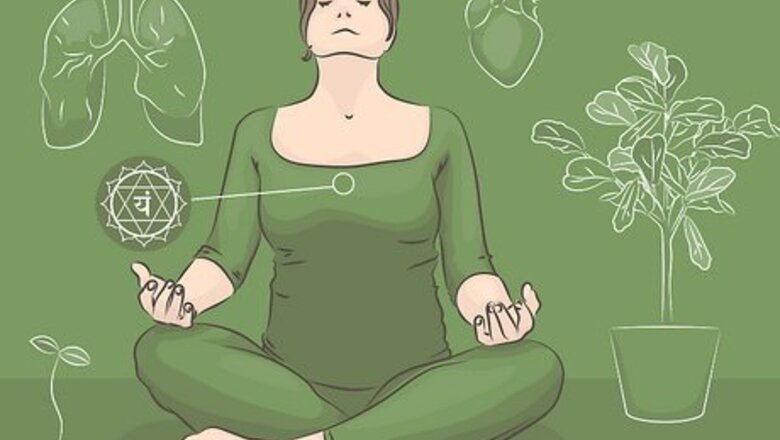
views
- Warm colors like red, orange, and yellow are often associated with positivity, energy, and comfort.
- Cool colors like blue, green, and purple are typically associated with calm, serenity, growth, and self-awareness.
- Decorate a room with the colors you want to use for healing or use chromotherapy—which is the use of colored light to balance your energies and heal you.
Best Healing Colors
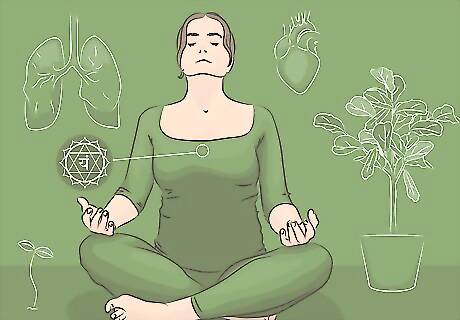
Green Green is a gentle, calming color, ideal for meditation and self-reflection. When you’re stressed and need to relax, the color green is believed to help balance your mind, provide a sense of peace, and encourage compassion and acceptance. It is also thought to have a healing effect on your heart, lungs, and circulatory system. Chakra: Green connects to the heart chakra, also called the 4th chakra, which makes it easier to embrace love and understanding when balanced. Other meanings: Outside of healing, green also represents nature, growth, fertility, and the earth. Green is also the easiest color for your eyes to process—which makes it even more soothing!
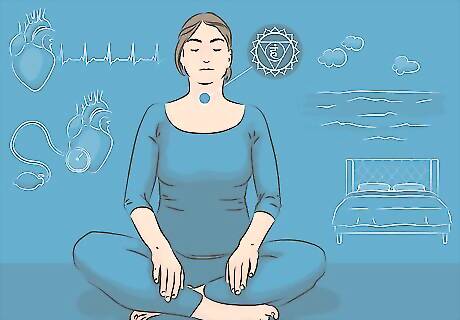
Blue Blue is another calming color thought to soothe the mind and body. Exposing yourself to the color blue may help you feel more relaxed; it’s used to lower blood pressure, relieve pain, and reduce rapid heart rates. It may also help improve sleep and get headaches under control. In terms of mental healing, blue may help expand your inner vision. Chakra: Blue connects to the throat chakra, also known as the 5th chakra, which governs your ability to listen, communicate, and express yourself effectively. Other meanings: Blue is a primary color and the color of the ocean and sky. It represents serenity, inspiration, wisdom, and reliability.

Purple Purple is an elegant color thought to help people reach enlightenment and self-awareness. It’s often used in meditation to help people think more intuitively, and it may also reduce feelings of stress and help people get a good night’s sleep. Purple is also thought to have a healing effect on a person’s immune system and nervous system and may have anti-inflammatory properties. Chakra: Purple is related to the crown chakra, also called the 7th chakra, which is responsible for spiritual connection and transformation. Other meanings: Purple is typically associated with royalty, power, luxury, creativity, dignity, magic, and ambition.
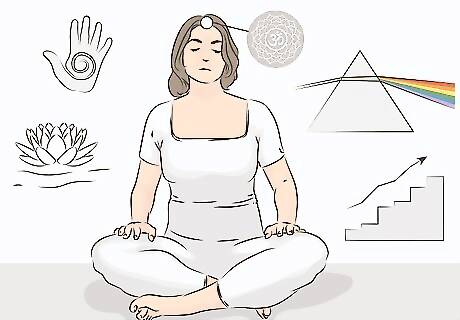
White White is unique in that it’s thought to encompass the healing abilities of all other colors. After all, white is a combination of every color—therefore, it’s used to treat a wide variety of mental and physical health issues. Mentally, it can boost productivity and mental clarity. Otherwise, it may help improve your recovery time while you heal from a physical injury or illness. Chakra: White governs the crown chakra (along with purple). Some chakras are associated with more than one color! Other meanings: White symbolizes purity and truth. To that end, it’s also thought to help resolve conflicts between people.
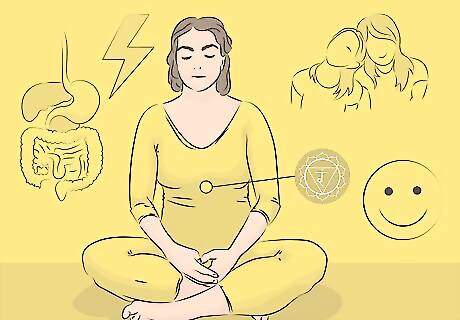
Yellow Yellow is the ultimate mood-boosting color. Its cheerful hue encourages positivity and may give your body more energy. In terms of mental health, it can alleviate depression and help you feel more optimistic about life. Physically, it may get rid of digestive issues and give you plenty of long-lasting energy to help you get through your day. Chakra: Yellow is associated with the solar plexus chakra, also called the 3rd chakra, which rules confidence and self-esteem. Other meanings: Yellow most often symbolizes optimism, joy, happiness, friendship, and intelligence.
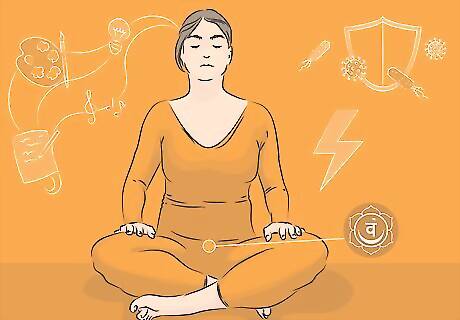
Orange Orange is an energetic color that may help improve your sense of enthusiasm and motivation to accomplish goals. It may also have a beneficial effect on your immune and circulatory systems, kidneys, liver, intestines, and spleen. Exposing yourself to the color orange may help give you a boost in energy—and it’s thought to be especially helpful for children. Chakra: Orange governs the sacral chakra, also called the 2nd chakra, which can improve creativity and confidence when opened. Other meanings: Orange typically symbolizes optimism, positivity, and warmth. It’s also the color of oranges (the fruit), which are high in vitamin C and super healthy when eaten regularly.
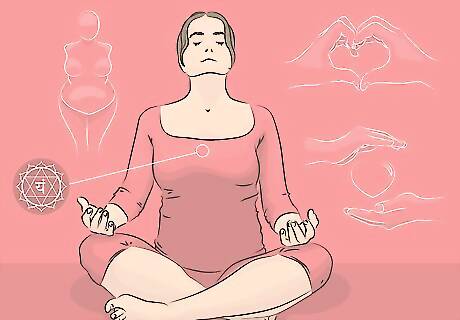
Pink Pink is thought to facilitate emotional healing. It has a soothing effect because it encourages feelings of compassion and love. It can also be stimulating, but its effects aren’t as intense as energizing colors like red or yellow. Rather, pink may help stimulate people and bring them happiness without giving them so much energy that they become jittery. Chakra: Pink is associated with the heart chakra, also called the 4th chakra, along with green. Other meanings: Pink is associated with things like femininity, kindness, charm, tenderness, love, and romance.
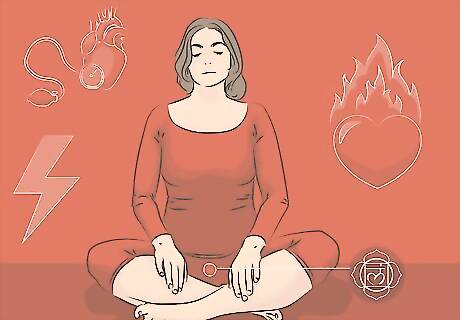
Red Red is bold and super stimulating! The color red is often used to fight exhaustion because it may improve vitality and boost your energy levels. Red may help people dealing with issues that cause low energy or mobility issues, including paralysis, and it benefits the circulatory system, increasing adrenaline, blood flow, and blood pressure. Chakra: Red is associated with the base chakra, also called the 1st chakra, which governs instincts, survival, vitality, and endurance. Other meanings: Red is often associated with courage, passion, heat, excitement, danger, anger, and sexuality. Because red increases blood pressure, don’t use it for healing if you already have high blood pressure!

Indigo Indigo combines the benefits of purple and blue. The color is a cross between purple and blue; therefore, it’s considered a calming color that may be able to reduce your stress and improve your intuition and self-awareness. Physically, exposing yourself to indigo may also alleviate headaches, migraines, and sinus issues. Chakra: Indigo is associated with the third eye chakra, also called the 6th chakra, which governs the unconscious mind, intuition, and imagination. Other meanings: Because it sits between blue and purple, indigo represents tranquility, harmony, confidence, dignity, and integrity.
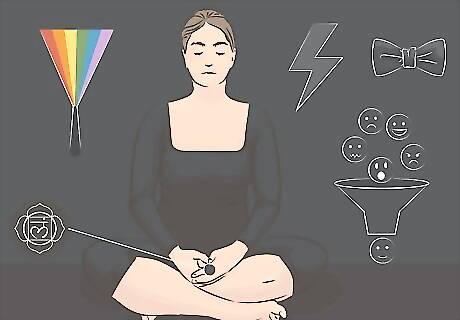
Black Black may not strike you as a healing color, but it very much is one! Though it’s intense, black is thought to absorb negative energy (because it naturally absorbs all other colors). Therefore, black can reduce stress and anxiety, helping you focus on processing emotions and navigating emotional turmoil. It may also help you process grief. Chakra: Black is associated with the base chakra (along with red). Other meanings: Black typically symbolizes power, mystery, sophistication, elegance, sadness, and anger.
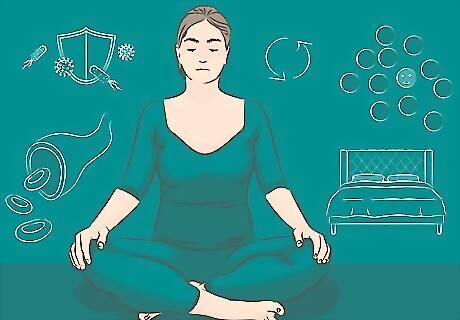
Teal Teal is a combination of green and blue, which means it takes on the beneficial effects of both colors. It’s thought to be an incredibly calming color, capable of helping you clear your mind and give you a good night of sleep—especially if you have a sleep disorder like insomnia. It’s also thought to boost your immune system, reducing the risk of infection and improving your red blood cell count. Other meanings: Teal represents clarity, open communication, individuality, renewal, and practicality.
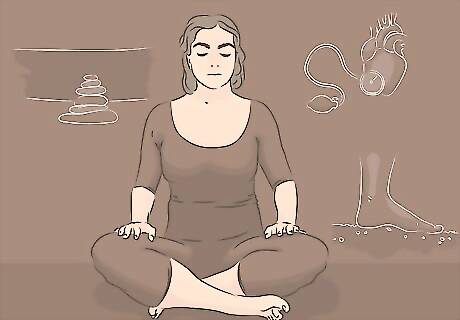
Brown Brown is a calming color thought to reduce your feelings of stress and emotional strain—and reduce physical strain as well. Brown is also believed to be useful for treating hypertension (high blood pressure) in color therapy. It has a stable, grounding energy that many people find soothing. Other meanings: Brown is a very earthy color, often found in nature, and it also symbolizes stability and reliability.
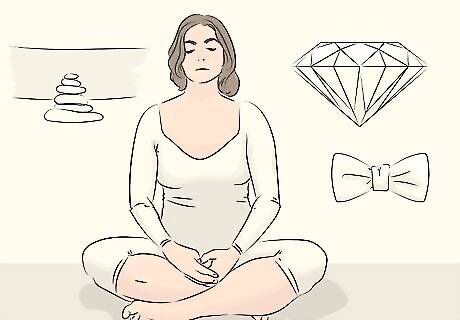
Cream Cream is similar to white (simple and relaxing), but it’s not as bright, making it easier to look at for long periods of time. Pure white can be a little stark and intense, whereas cream is gentler and thought to have a calming effect. It may help you relax, control intense emotions, and calm yourself when upset. Other meanings: Cream is often associated with elegance, luxury, purity, and refinement.

Lavender Lavender is a light and delicate shade of purple; like purple, it’s also considered quite soothing and helpful for improving sleep. Lavender is also associated with improving vitality, which may help you feel more youthful and relaxed. Use lavender to meditate—or when you simply want to encourage more self-reflection. Other meanings: Lavender has some of the same symbolism as purple—royalty, and refinement, for example. Lavender is also a flower that’s commonly associated with purity, devotion, serenity, and grace.
What is chromotherapy?

Chromotherapy is the use of color light to heal energy imbalances. Chromotherapy is essentially color therapy—the idea you can treat mental and physical health issues when you expose yourself to a specific color or colored light. In chromotherapy, colors are “prescribed” based on your needs and the medical issues you’re facing. For example, exposure to green light is thought to help you reduce stress and clear away unhealthy thoughts over time. It’s important to remember that chromotherapy is not scientifically proven and is considered “alternative medicine.” Therefore, chromotherapy should never replace proper medical treatment. Always consult a doctor and follow their advice on medical issues—and, if you want to, use chromotherapy as a helpful supplement.
How to Use Colors for Healing
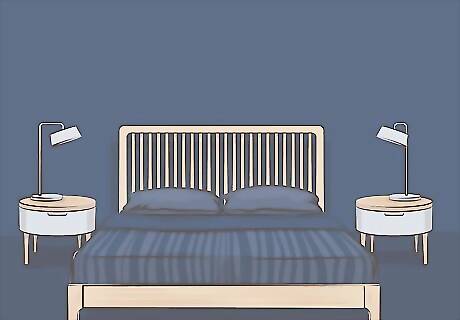
Decorate rooms with a specific color to facilitate healing. The easiest way to decorate a room with a particular color is to paint it! Alternatively, fill a room with colored furniture or accent pieces that may facilitate the kind of healing you’re looking for. Once decorated, spending time in the room may help you unlock the healing benefits of that color. For example, painting your bedroom indigo might help you sleep better at night if you struggle with insomnia. Need to meditate? Decorate your room with cool colors like green, blue, indigo, teal, and purple. While chromotherapy is alternative medicine, color has been proven to alter and boost people’s moods, which is why hospitals and doctors paint their offices with soothing colors like blue, yellow, and teal.

Install colored lights in your lamps. If you’re interested in chromotherapy, try replacing regular light bulbs with colored ones—or get a lamp specifically designed to give off colored light. Choose the color of your lights based on what kind of mental or physical health issue you want help with. For example, installing a purple lightbulb in your office or living room might help you de-stress. Meanwhile, installing a red lightbulb in your living room or office might help boost your energy. If you want to sleep better at night, install a blue lightbulb in your bedside lamp. Boost your mood and sense of optimism with a cheery yellow lightbulb in your living room lamp. If you have a skin issue like eczema, acne, or psoriasis, talk to a dermatologist. They may prescribe LED light therapy to treat it, as experts believe that LED lights may actually improve skin conditions.

Use colorful gemstones to power mental and physical healing. Some people believe that gemstones have healing powers, so pick up a gemstone in a color that matches your intentions and the kind of healing you’re trying to achieve. Place the gemstone somewhere in your home, carry it with you (or incorporate it into the jewelry you wear), or use it while meditating to take advantage of the gem’s healing properties. For example, if you want to use the color red to get more energy and vitality, carry a red gemstone like garnet, carnelian, or red jasper with you. Try other colors like: To unlock purple’s calming abilities, use an amethyst while you meditate or place a gemstone in your bedroom when you need to relax. If you need to use a white crystal to speed up your body’s ability to heal, use a quartz crystal or opalite gemstone.

Wear colorful clothing that reflects the kind of healing you want. Looking for energy and vitality? Wear a red shirt. Want to maintain a sunny, positive attitude all day? Throw on something yellow. Wearing colorful clothes lets you take advantage of healing colors no matter where you go that day because the healing colors are always on your body. You might also be able to boost your mood by wearing or surrounding yourself with your favorite color, regardless of what it is! Try to find out your color aura as well. Some people believe everybody has a personal energy field called an aura that exudes color. While you can’t change your own aura, the aura’s colors are thought indicate when you’re healthy and when you may need healing. For example, bright green auras are indicative of calm and compassion, while a sickly green aura may indicate an energy imbalance.




















Comments
0 comment